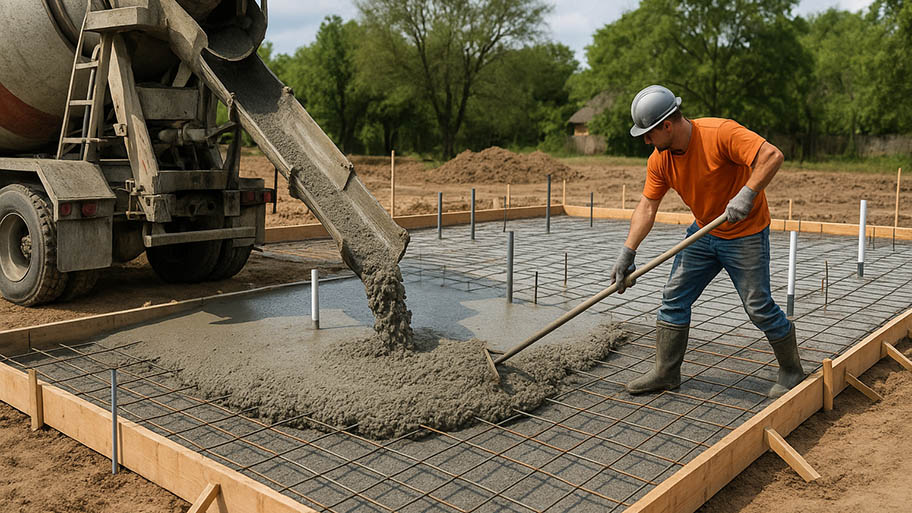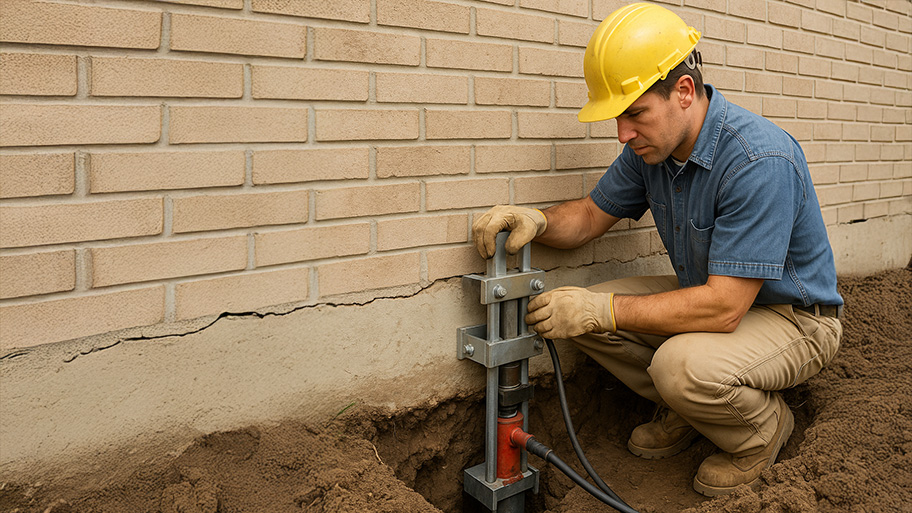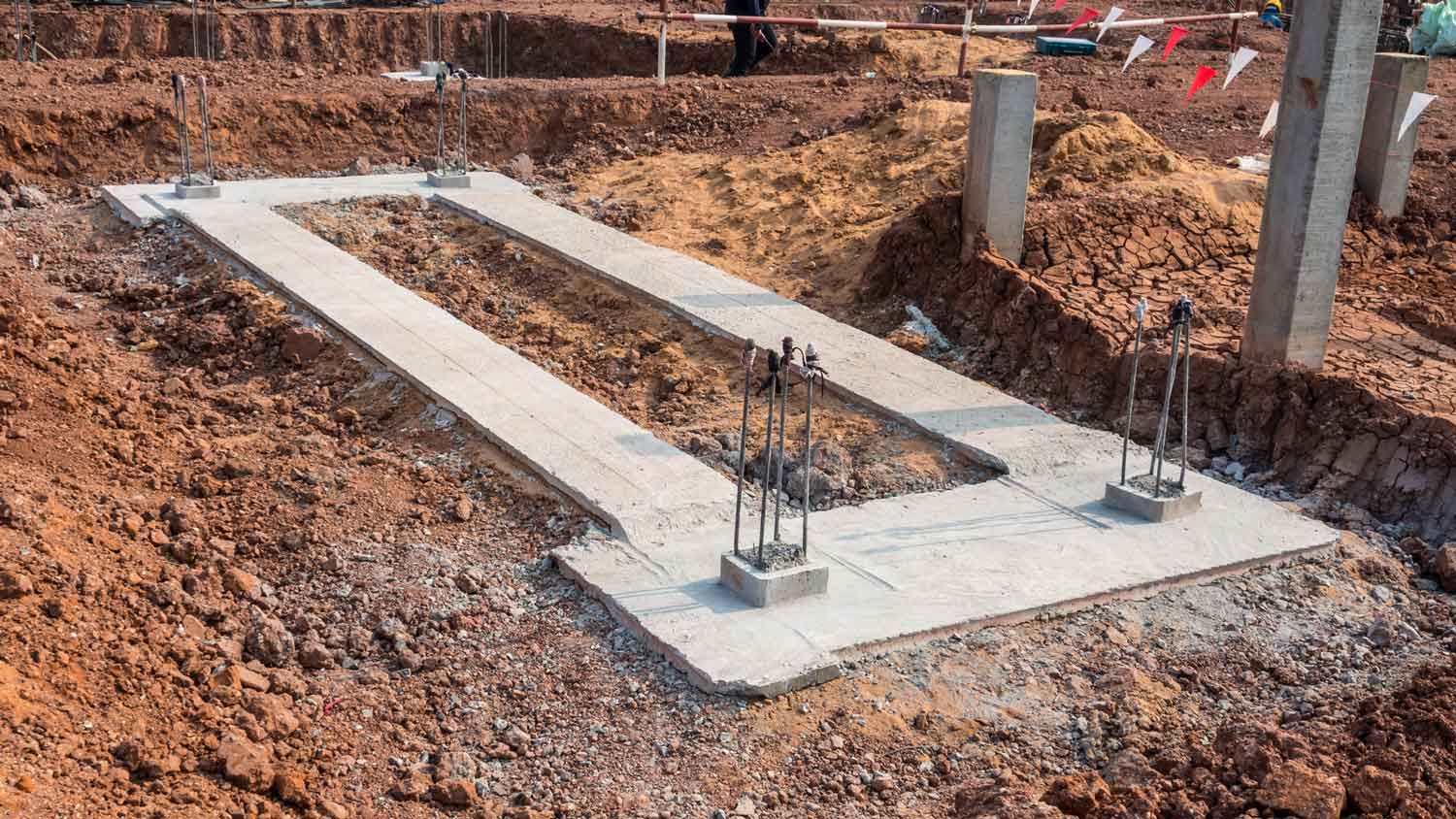
A foundation for a new-build home averages around $11,000. Find out all the factors that affect the cost of a foundation and how to save money.
The average crawlspace to basement conversion cost ranges from $83,000 to $128,000, with most homeowners paying an average of $105,000. Main factors include size, excavation, permits, and finishing choices.


Crawlspace to basement conversion costs depend on excavation, waterproofing, and finishing level.
Expect to pay between $50 and $150 per square foot to convert a crawlspace to a basement.
Crawlspace to basement conversions add usable living space, offering an ROI of 50% to 75%.
Professional labor makes up 50% to 60% of your project total and helps ensure safety and code compliance.
This article was created using automation technology and thoroughly fact-checked and edited by an Angi Editor in accordance with our AI policy.
On average, a crawlspace to basement conversion costs from $83,000 to $128,000, with an average of $105,000. Expect to pay $50 to $150 per square foot, depending on project complexity and finishes. This guide breaks down every cost factor so you can plan your conversion with confidence.
A crawlspace to basement conversion transforms an underutilized area into valuable living or storage space. We’ll explain the costs, what influences them, and how to get the most value from your investment.
Converting a crawlspace into a full basement is a major structural project with costs that vary depending on your home’s size, condition, and location. The average cost per square foot is $50 to $150, covering everything from excavation to finishing.
The process involves several major phases: excavation, underpinning and foundation work, waterproofing, interior finishing, and securing permits. Each phase has its own set of challenges and expenses. Excavation and underpinning are often the largest cost drivers, especially in homes with limited access or older foundations. Waterproofing is essential to protect your investment, while finishing costs vary widely based on your chosen materials and layout.
Key factors impacting crawlspace to basement conversion cost include the size of your crawlspace, soil conditions, accessibility, finishing level, and the need for structural modifications. Labor is a significant portion of the budget, as this project requires skilled professionals to ensure safety and compliance.
| Project Phase | Description | Average Cost |
|---|---|---|
| Excavation | Digging out crawlspace, debris removal | $15,000–$40,000 |
| Underpinning | Reinforcing or lowering foundation walls | $10,000–$35,000 |
| Waterproofing | Drainage, sump pump, vapor barriers | $3,000–$9,000 |
| Finishing | Framing, drywall, flooring, lighting | $10,000–$40,000 |
| Permits & fees | Building, electrical, plumbing permits | $2,000–$5,000 |
| Labor | Contractor and specialist labor | 50%–60% of project total |
The biggest cost drivers include excavation, underpinning, waterproofing, and the extent of finishing work. Unexpected structural issues or poor access can also increase costs.
The size of your crawlspace directly affects total conversion cost. Larger spaces require more excavation, materials, and finishing, which increases both labor and material costs. Most homeowners pay between $50 and $150 per square foot, depending on the complexity and quality of finishes.
For example, a small 500-square-foot conversion will cost significantly less than a 1,200-square-foot project, but both require the same careful planning and engineering. Ceiling height and the need to dig deeper to meet code can also increase costs, as greater excavation and underpinning are required.
| Size (Sq. Ft.) | Average Cost |
|---|---|
| 500 | $25,000–$75,000 |
| 800 | $40,000–$120,000 |
| 1,200 | $60,000–$180,000 |
Deeper dig-outs to achieve minimum ceiling heights (seven to eight feet finished height) increase both excavation and structural costs.
Turning a crawlspace into a basement requires a team of skilled professionals, with labor costs accounting for 50% to 60% of your project total. A general contractor oversees the entire project, coordinating excavation, structural work, and finishing. Expect to pay general contractor fees of 10% to 20% of the total project cost.
A structural engineer is essential for assessing your existing foundation and designing underpinning or reinforcement, with fees ranging from $2,000 to $5,000. Excavation contractors handle the digging and removal of soil, which can cost $15,000 to $40,000, depending on access and soil type.
Regional labor rates and demand for skilled trades can impact these costs. In high-demand urban areas, rates for all pros will be higher than in rural regions.
Each professional brings specialized expertise: contractors manage logistics, engineers ensure structural integrity, and excavation teams safely remove materials. These roles are critical to a safe, code-compliant conversion.
| Professional | Average Cost |
|---|---|
| General contractor | 10%–20% of project |
| Structural engineer | $2,000–$5,000 |
| Excavation contractor | $15,000–$40,000 |
Depending on your project’s scope and finishing plans, you may need to hire additional specialists:
Electrician: $2,000 to $8,000 for new wiring, outlets, and lighting.
Plumber: $2,000 to $10,000 for installing or relocating plumbing lines.
HVAC technician: $1,500 to $7,000 to extend or modify heating and cooling systems.
Interior designer or finishing contractor: $3,000 to $8,000 for layout, finishes, and space planning.
These professionals ensure your new basement is safe, comfortable, and meets all local codes.
Geographic location has a major impact on crawlspace to basement conversion cost. Urban and high-demand regions tend to have higher labor rates and material costs, while rural areas may see lower prices but can face challenges with material availability.
Local building codes and permit fees also vary by city or state. Some areas require more extensive inspections or additional waterproofing measures, which can add to the project’s complexity and cost.
Always check with your local building department for specific permit and code requirements in your area.
Beyond the main phases, several extra costs can arise during a crawlspace to basement conversion. Taxes on construction, increased insurance premiums, and warranty fees for foundation work can all add to the budget.
Accessibility challenges—such as tight crawlspace entrances, difficult lot access, or sloped yards—make excavation more complex and costly. If your existing foundation needs repairs before conversion, expect additional charges. After the project, you’ll also need to budget for post-construction cleanup and debris removal.
Before excavation, existing crawlspace structures may need to be demolished and removed. Clearing out old insulation, vapor barriers, or damaged materials is necessary to prepare the space for digging. This prep work can cost $1,000 to $4,000, depending on the amount of debris and type of materials. Disposal fees for old materials should also be included in your project budget, as they can add several hundred to a few thousand dollars.
Permits are required for most crawlspace to basement conversions, including building, structural, electrical, and plumbing permits. Your general contractor will often handle the permitting process, but homeowners sometimes need to be involved.
Permit costs fall between $2,000 and $5,000, depending on local regulations and project scope. Inspections are required at multiple stages, and re-inspection fees may apply if issues are found.
Some homeowners consider DIY to save on labor, but converting a crawlspace to a basement is a complex, risky task. Professional conversions cost more upfront but ensure structural safety and code compliance. DIY projects might save thousands in labor, but require advanced skills, heavy equipment, and significant time—often several months of full-time work.
DIYers need expertise in excavation, concrete, framing, waterproofing, and finishing. Mistakes can lead to serious issues, from water damage to structural failure, which are costly to fix and may void your home insurance.
It’s only safe to DIY minor finishing tasks, such as painting or installing flooring. Excavation and structural work should always be left to licensed professionals.
Remodeling a crawlspace into a basement involves major structural changes, such as digging out soil, underpinning foundations, and creating new living space. This is very different from renovating an existing basement, which focuses on updating finishes or restoring a previously converted space.
Remodeling (converting a crawlspace to a basement) costs $60,000 to $150,000 or more, while renovating an existing basement ranges from $20,000 to $60,000. Remodels add square footage and function, while renovations improve what’s already there. Both can boost home value, but conversions have a bigger impact on usable living space.
A remodel example is a full dig-out with underpinning, while a renovation may simply upgrade flooring, lighting, and walls in an already finished basement.
Choose basic finishes over luxury upgrades.
Complete some finishing work (painting, flooring) yourself.
Get multiple quotes from qualified local foundation contractors.
Schedule work during off-peak seasons for better rates.
Address drainage and waterproofing early to avoid costly repairs.
Limit custom features and stick to a simple layout.
Reuse or repurpose existing materials where possible.
Converting a crawlspace to a basement often increases a home’s resale value by adding livable square footage. The return on investment (ROI) for these projects ranges from 50% to 75%, depending on location, quality of work, and local market demand. This ROI is competitive with other major improvements, such as adding a room or finishing an attic.
Factors that affect ROI include the quality of construction, how well the new space meets local demand, and whether safety and efficiency standards are met. Benefits go beyond resale value: you’ll gain more living space, improved storage, and potential for a rental suite or guest area. Prioritizing safety, energy efficiency, and universal design features can further enhance your investment’s value.
Home is the most important place on earth, which is why Angi has helped more than 150 million homeowners transform their houses into homes they adore. To help homeowners with their next project, Angi provides readers with the most accurate cost data and upholds strict editorial standards. We extensively research project costs to develop the pricing data you see, so you can make the best decisions for you and your home. We rely on reputable sources, including the U.S. Bureau of Labor Statistics, academic journals, market studies, and interviews with industry experts—all to ensure our prices reflect real-world projects.
Want to help us improve our cost data? Send us a recent project quote to [email protected]. Quotes and personal information will not be shared publicly.
From average costs to expert advice, get all the answers you need to get your job done.

A foundation for a new-build home averages around $11,000. Find out all the factors that affect the cost of a foundation and how to save money.

Foundation repair costs can be tricky when you have a large repair on your hands. This guide walks through costs from small cracks to total replacement.

Whether trying to protect it or transport it, raising a house is no small feat. Read on to find out everything you need to know about the cost to raise a house.

From pier and beam to concrete slabs, learn the pros and cons of the five most-used foundations to keep your mobile home foundation grounded and secure.

Discover how much concrete footing costs to plan your project. Learn about average prices, cost factors, and ways to save when installing concrete footings.

Discover eight home foundation types for home construction, their functions, benefits and drawbacks, and how to identify each kind.